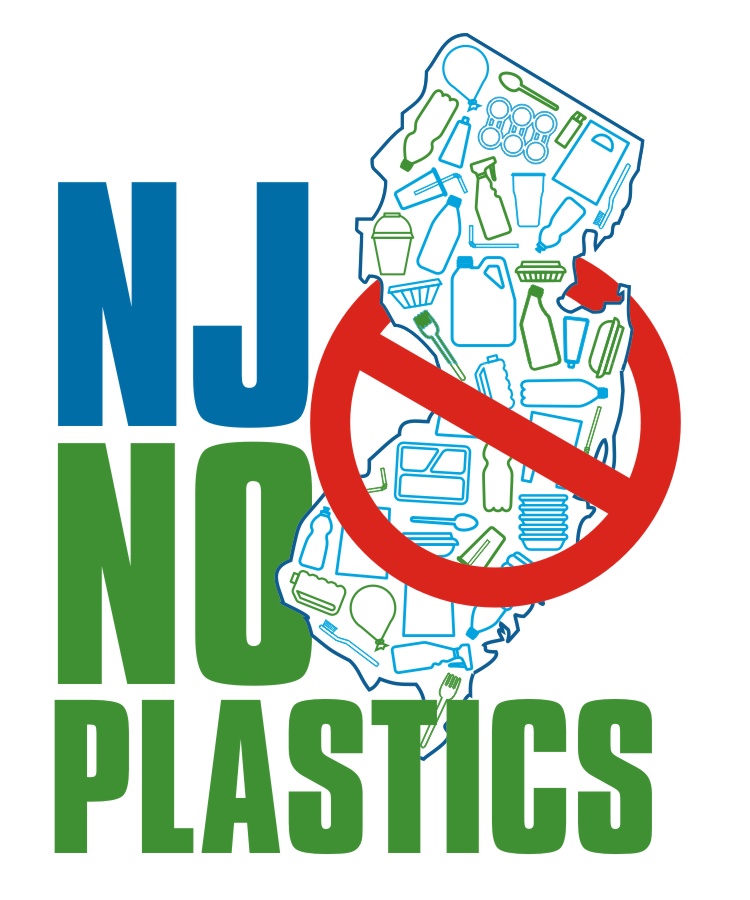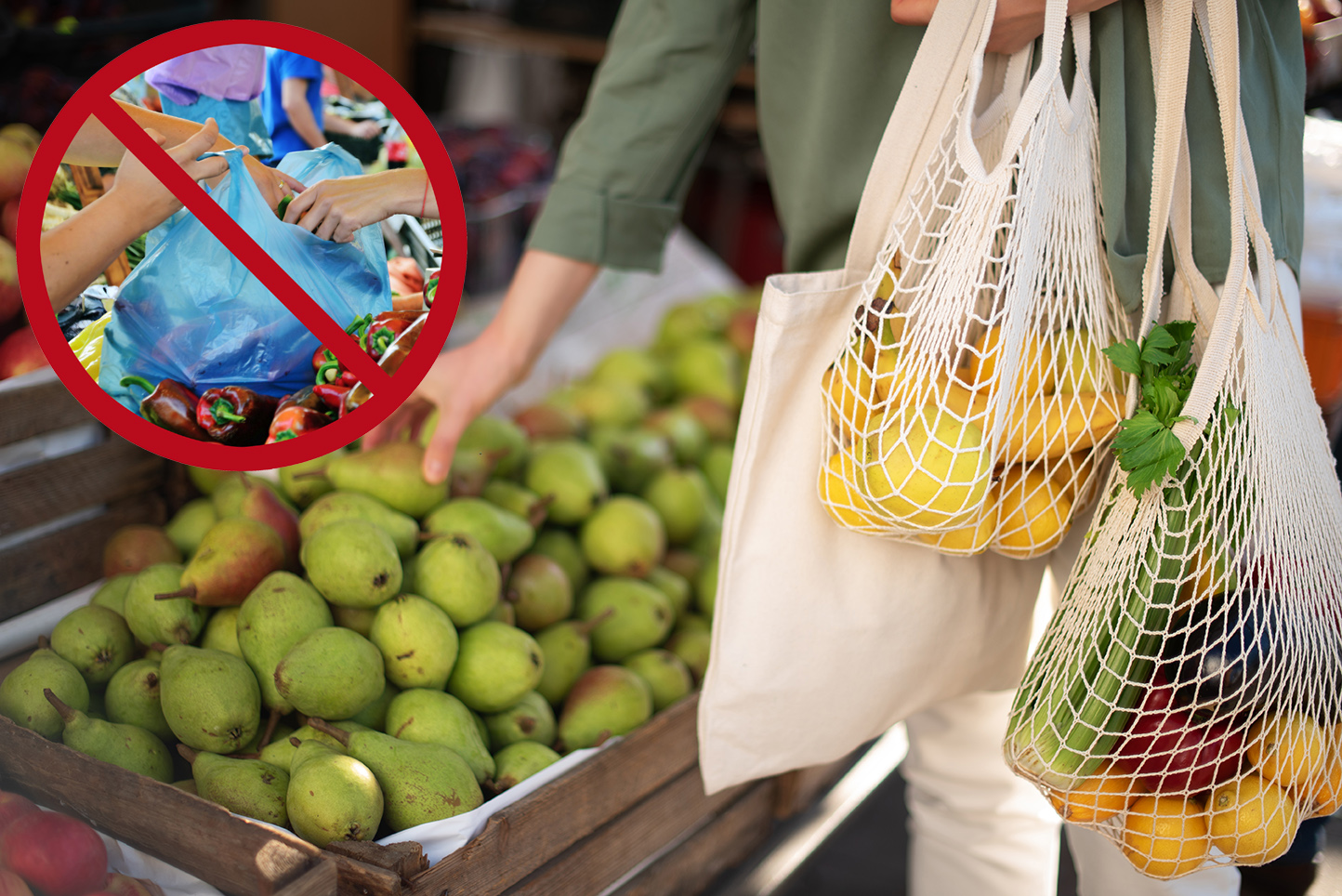Plastic Pollution –
Why It Matters!
Why should you care about plastic pollution? Afterall, plastic is found in our homes, in our workplace, restaurants, stores, and virtually everywhere in our lives. However, plastic usage has increased 84% between 2002 and 2020. By
the year 2050, it is estimated that production will increase by another 150%. Approximately, 40% of the plastic produced is for single-use. This problem is right here in our backyards and beaches – in fact, over 4.4 billion plastic
bags are used in New Jersey alone each year. This overwhelming amount of plastic, particularly single-use plastic, is causing serious harm to the health of humans, marine life, wildlife, and our Earth. Single-use plastics take an
enormous amount of water, energy, and chemicals to produce, yet are only used for mere minutes and persist in our environment for more than a millennium.
Did you know?
We produce 380 million tons of plastic each year worldwide, half of which is for single-use items. That’s nearly equivalent to the weight of the entire human population.
New Jersey residents use 4.4 billion single-use plastic bags and 1,300 football fields of trees worth of paper bags every year.
Plastic does not decompose; it breaks up into smaller and smaller pieces called microplastics. Every minute, a garbage truck of plastic waste enters the oceans.
About 80% of single-use plastics are NEVER recycled, they go into landfills, incinerators or dumped. The United States is the largest generator of plastic waste in the world.

We are the solution
to the pollution
New Jersey is now home to the strongest Plastic Pollution Reduction Law in the United States!
The Link Between Plastic, Health, Climate, and Environmental Justice

Plastic and Your Health
Plastics are now in the food we eat, the water we drink and the air we breathe – in fact, every week we ingest an entire credit card worth of plastic in the form of microplastics that are only 5 millimeter long.
Illness such as cancer, diabetes, reproductive disorders, and neurological impairments of developing fetuses and children are some problems with exposure to chemicals. There are over 10,500 chemicals in plastics and at least 2,480 are substances of potential concern which means there is evidence to indicate that they are harmful. Chemical additives such as Styrene, Phthalates, and Bisphenol A (BPA) are toxic, carcinogenic or endocrine disrupting. The World Health Organization identifies Styrene, the main ingredient in polystyrene foam, as a likely human carcinogen (means it can cause cancer) and that endocrine disrupting chemicals are a global threat to public health. From plastics generation to disposal, our health is being compromised.
Plastic & Climate
Plastic generates greenhouse gas (GHG) emissions at every step of its life cycle, from extraction to waste. U.S. plastics industry’s contribution to climate change is on track to exceed that of coal-fired power by 2030. As plastic breaks down in landfills through sunlight and heat, it releases powerful greenhouse gases such as methane that warm up the Earth’s atmosphere.
Plastic & Environmental Justice
Plastic production and litter from discarded single-use plastics like straws and bags, impacts low-income and marginalized communities disproportionately. The U.S. Environmental Protection Agency estimates that every year 150 catastrophic accidents, such as fires or explosions that release toxic chemicals, happen at plastic production facilities that are in marginalized communities. Recognition of this issue in New Jersey led to passage of the New Jersey Environmental Justice Law in 2020.
Plastic and Wildlife
Plastic pollution is an animal rights issue. It endangers more than 1,200 species from ingestion or entanglement. From seals with their necks slashed by fishing line, to turtles with straws stuck in their noses, to seabirds who starve to death with their bellies full of plastic, we’ve seen the danger that plastic pollution poses for animals in the marine environment.
Plastic Laws Create Solutions
What can be done to help solve the plastic problem here in New Jersey? Thankfully, New Jersey’s Plastic Pollution Reduction Act is the strongest legislation in the nation to reduce single-use plastic. The law is a big step in the right direction and is expected to reduce single-use plastic and polystyrene usage significantly. Additionally, the law helps to raise public awareness about the dangers of plastic and it prevents millions of tons of plastic from entering the waste stream each year.
Ending plastic pollution is a complex challenge that requires a multi-faceted response to achieve significant impacts. The Plastic Pollution Reduction Act is one important step in what will be a long road ahead. The bottom line: You have to start somewhere. New Jersey and many other states across the nation are implementing plastic bag and polystyrene bans to reduce the biggest contributors to plastic pollution in the environment. We have seen a lot of positive action, but the truth is that we all need to do more and turn off the tap on plastic pollution at the source. New Jersey residents must show their support for the Plastic Pollution Reduction Act, spread the word, and educate others about the hazards of plastic – the beauty of our state, well-being of ourselves and our children, and health of our planet depend on it!

This website will be updated as more information becomes available. Email ANJEC for more information.

